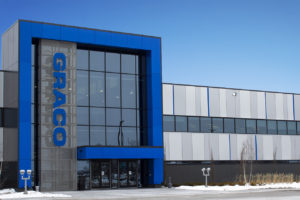New Smog-Eating Aluminum Panels for Architectural Structures…and Exterior Signs?
With the recent announcement from ALCOA that they have successfully developed a smog-eating aluminum product for architectural panels, one has to wonder when this innovation will become “just the way we use aluminum in the architecture and building industry.” As it stands today, no metal building material is more commonly used and more recycled than aluminum. Chances are, the aluminum studs inside your office wall or the aluminum wall sign outside your door was once a soda can or a wing from a World War II bomber or even a child’s toy.

ALCOA’s new aluminum paneling has a special titanium dioxide coating that, when combined with sunlight, acts as a catalyst to break down pollutants such as smog into harmless matter that rain washes away. According to ALCOA, 10,000 square feet of its new aluminum paneling has the same air-cleaning power of about 80 trees. (see USA Today article “ALCOA unveils smog-eating aluminum” by Wendy Koch for more details)
Here are some excerpts direct from ALCOA:
“Alcoa Architectural Products has developed a proprietary process that leverages HYDROTECT™ technology from TOTO® to apply a titanium dioxide coating, called EcoClean™, to the pre-painted aluminum surface of Reynobond®. The result is the world’s first coil-coated aluminum architectural panel that helps clean itself and the air around it. As a photocatalyst, titanium dioxide interacts with sunlight to break down organic matter both on and floating around the surface of the building panels, leaving the organic matter sitting on the surface of the Reynobond® panel, ready to be washed away. When it rains, water doesn’t bead on the surface. Instead, it collapses and runs evenly off the building, taking most of the broken down pollutants with it. That means lower maintenance costs for owners, and a consistently cleaner image for the building over time. “
Click here to visit the technical documents page.
However, with all new green technologies, there is a price factor. According to initial reports, the new smog-eating aluminum panels will cost at least 5% more than traditional aluminum and you’ll have to use a lot of it to make a dent in cutting down on air pollution.
So what does this mean for the architectural signage industry? One can imagine that architects and general contractors will begin to seek out exterior signage providers who can work with the new aluminum and specify their products or their company for exterior monuments and dimensional letters for building facades.
Performance will be a key factor – will designers be able to live with the pre-painted finishes available from ALCOA (click to see specifications)? Most likely they will due to the environmental benefits. We also suspect there will be a lot of routed faces with LED or energy-efficient fluorescent lighting elements to provide color and design appeal to the exterior signage.
Furthermore, eliminating the painting process from custom exterior signage fabricators should help off-set the increase in material price and shave between 3 to 5 days off the manufacturing timeline.
Where do you see this new green technology being used? Will you look into using it for your next signage project? Let us know.

